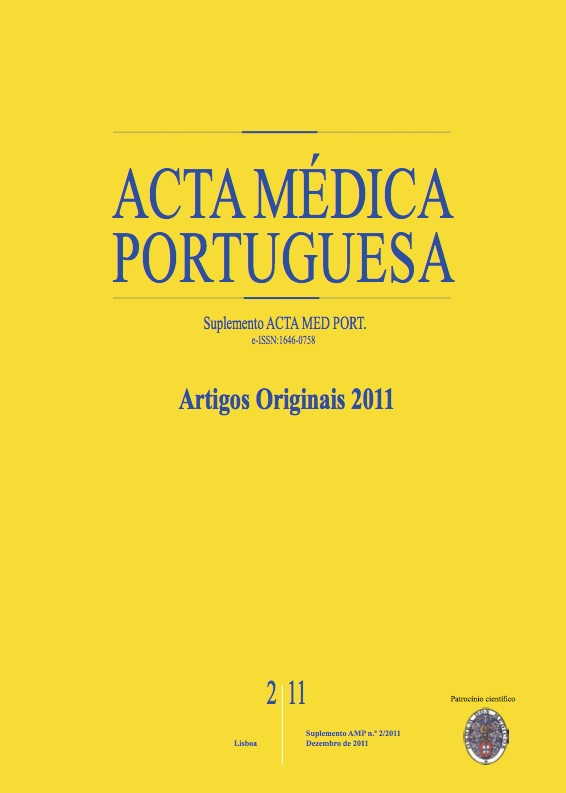Continuous subcutaneous insulin infusion.
DOI:
https://doi.org/10.20344/amp.1515Abstract
Continuous subcutaneous insulin infusion (CSII) and multiple daily injections (MDI) represent two strategies of intensive insulin therapy, obtaining a strict metabolic control. The importance of such rigorous metabolic control in reducing the frequency and severity of diabetes long-term complications was highlighted by the Diabetes Control and Complication Trial (DCCT).To review the experience in the use of ISCI at Hospital São João, comparing it with the therapeutic modality of MID, regarding metabolic control, weight and body mass index (BMI), microalbuminuria, frequency of adverse events, lipid profile and quality of life.This retrospective, observational study included 25 type 1 diabetic patients followed-up on Endocrinology outpatient at Hospital São João, receiving CSII for more than 3 months after they were treated with MDI also for a period exceeding 3 months. For both periods of treatment, clinical data were obtained on the quality of glycaemic control (assessed by the levels of glycated hemoglobin--A1c), lipid profile, weight and body mass index (BMI) and microalbuminuria. To evaluate the impact on quality of life we used the ADDQoL questionnaire. A questionnaire was also used to determine the frequency of adverse events (severe hypoglycemia and ketoacidosis).The sample of 25 subjects with mean age of 33.35 ± 9.59 years, with a duration of disease, on average, of 17.1 ± 8.15 years and receiving ISCI for an average of 2.48 ± 1 08 years, obtained a decrease of 1.1% (p = 0.001) on the median value of A1c between 3 and 6 months of treatment when compared to MDI, reduction sustained throughout the analyzed period. The variation of the daily insulin requirements after pump placement was 12.75 units of insulin (p = 0.015), equivalent to a decrease of 0.20 units/kg (p = 0.023). The median of the distribution of BMI decreased 0.48 kg/m2 (p = 0.507) during CSII. The parameters of lipid profile and microalbuminuria showed no trend upward or downward after institution of CSII. The score obtained in the ADDQoL questionnaire was greater with CSII, the difference between the medians of the score distribution, before and after pump placement, was 0.056 (p = 0.92). There was a subjective perception of reduced frequency of adverse events with ISCI.The introduction of CSII allowed optimization of metabolic control, reduction of the daily insulin requirements and achievement of a higher level of satisfaction with no change in lipid profile, no weight gain and without increasing the frequency of adverse events.Downloads
Downloads
How to Cite
Issue
Section
License
All the articles published in the AMP are open access and comply with the requirements of funding agencies or academic institutions. The AMP is governed by the terms of the Creative Commons ‘Attribution – Non-Commercial Use - (CC-BY-NC)’ license, regarding the use by third parties.
It is the author’s responsibility to obtain approval for the reproduction of figures, tables, etc. from other publications.
Upon acceptance of an article for publication, the authors will be asked to complete the ICMJE “Copyright Liability and Copyright Sharing Statement “(http://www.actamedicaportuguesa.com/info/AMP-NormasPublicacao.pdf) and the “Declaration of Potential Conflicts of Interest” (http:// www.icmje.org/conflicts-of-interest). An e-mail will be sent to the corresponding author to acknowledge receipt of the manuscript.
After publication, the authors are authorised to make their articles available in repositories of their institutions of origin, as long as they always mention where they were published and according to the Creative Commons license.









